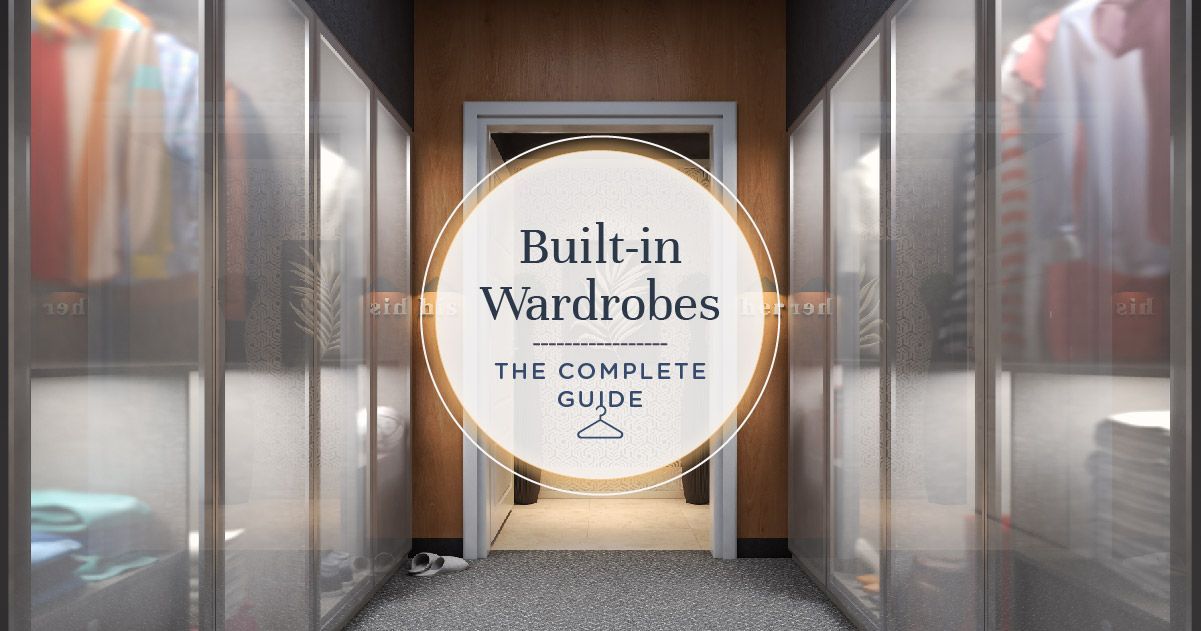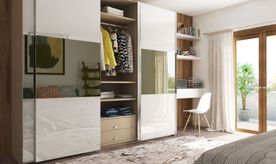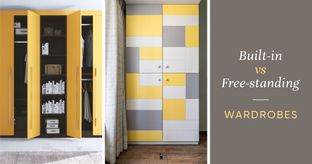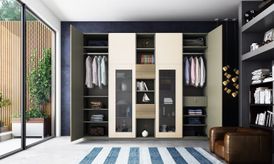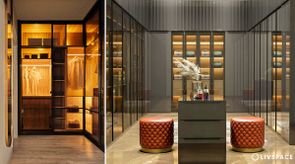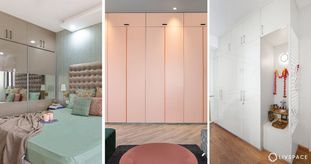Choosing a wardrobe can quickly turn into a homeowner’s nightmare, considering the number of facets that need to be considered before making a final decision. With free-standing and pre-built wardrobes, the caveat is that it may be the wrong fit for your room or may run out of storage space too quickly. At the same time, since they’re mass-produced, they’re less likely to cater to your custom storage needs.
This is where built-in wardrobe designs come in.
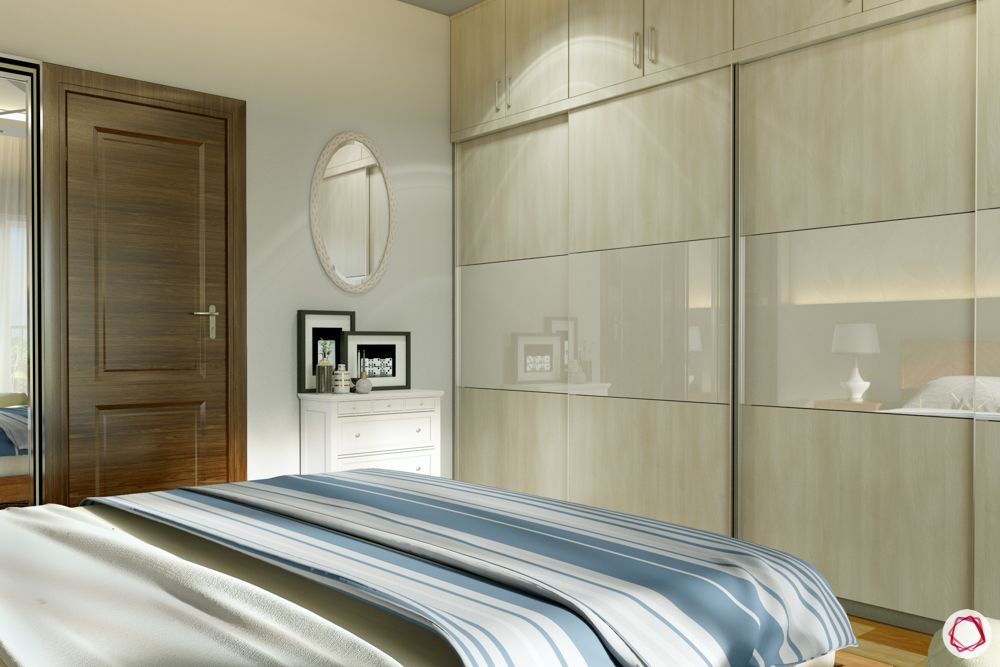
Pros of getting a built-in wardrobe
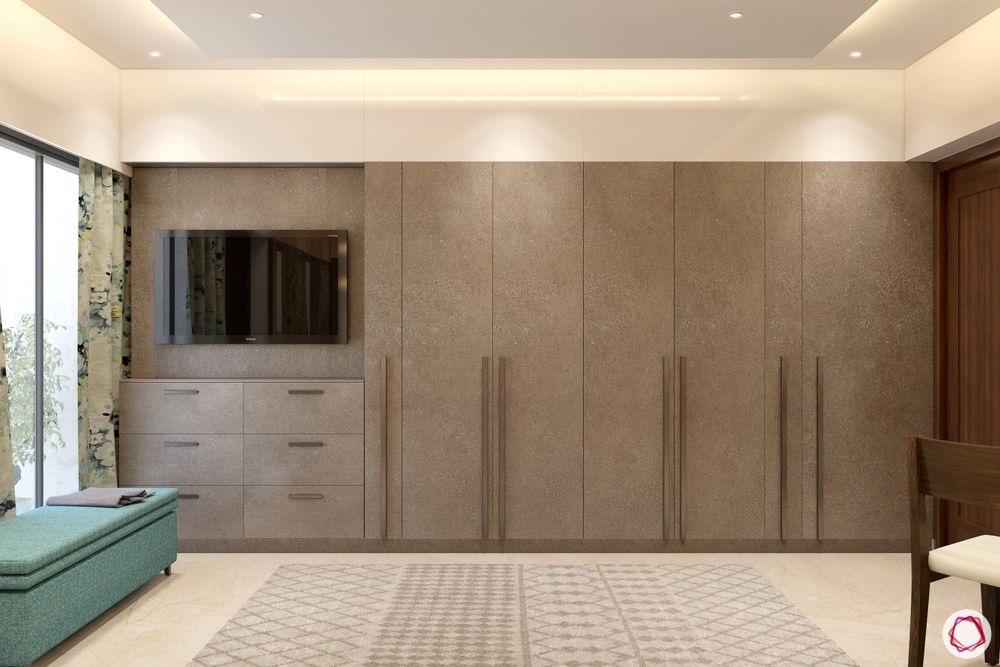
Built-in Wardrobe Designs Advantage #1: Customised Interiors
You can customise the interior of a built-in wardrobe to suit your storage requirements, whether it’s adding extra loft space, or installing two hanger rods instead of the standard-issue single. This is beneficial because freestanding closets tend to fail when going beyond the cookie-cutter two-drawer, single-rod setup, which may be way lesser than you need. By opting for built-in wardrobe designs, you can customise the interior setup for your requirements to avoid having to buy organisers and extra chests of drawers.
Built-in Wardrobe Designs Advantage #2: Custom Facade
Wit readymade closets, you’re often left with no choice when it comes to the appearance, having to choose between pre-existing colour palettes and awkwardly fit it into your interior design plan. With built-in wardrobe designs, you can also select the colour, material and finish of the wardrobe’s exterior in line with your design needs or current colour palette.
Cons of opting for built-in wardrobe designs

Built-in Wardrobe Designs Disadvantage #1: Fixed in Place
Built-in wardrobe designs are fixed in a place, which means you won’t be able to shuffle it around when changing the layout of your room. While this may be a boon for those who like to settle on a final design to make a space more familiar, it may be a caveat for those who regularly like to switch things up.
Built-in Wardrobe Designs Disadvantage #2: Permanent
Fixed wardrobes are more or less permanent. Since they’re immovable and occupy a single space, you can’t switch it out after a year unless you decide to go the whole hog and completely break it down. That said, those desperate for a change can look into changing up the exterior for a change without having to change the inside unless necessary.
Onto the inside of built-in wardrobe designs
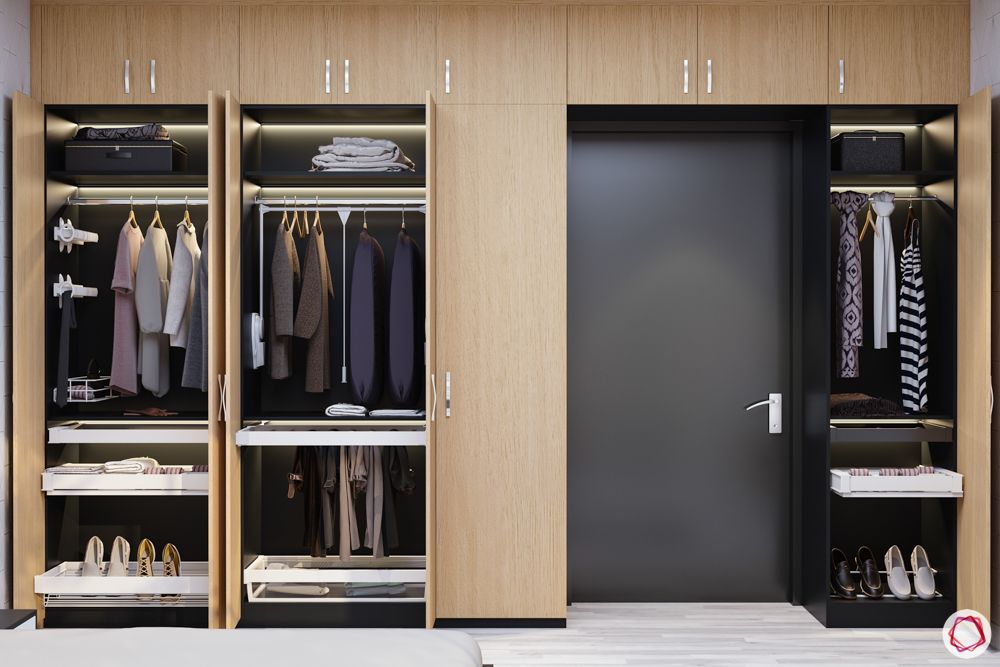
Built-in wardrobe designs look just how you want them to on the inside. To divide storage space, it’s always sensible to opt for more hanging space over shelf space.
- Hanging space: It is much easier to maintain your closet and put away laundry. An added benefit of this is that your clothes are always on display and you can de-clutter based on season, occasion or do a full Marie Kondo.
- Drawers: These are perfect for storing delicates, socks, accessories or things you simply can’t hang up. They’re especially beneficial if you like to keep important documents or precious jewellery within your closet system for safekeeping.
- Shelves: These work well for knits, jeans, loungewear, t-shirts or any other garment type that folds easily and isn’t flimsy or delicate. If you have shelves at the bottom of your closet, they’re ideal for seasonal footwear.
Where you position these also matter on whether your wardrobe has sliding or hinged doors. For sliding doors, shelves and drawers go to the side for easy access while for hinged doors, they go in the middle.
Measurements to watch out for in built-in wardrobe designs
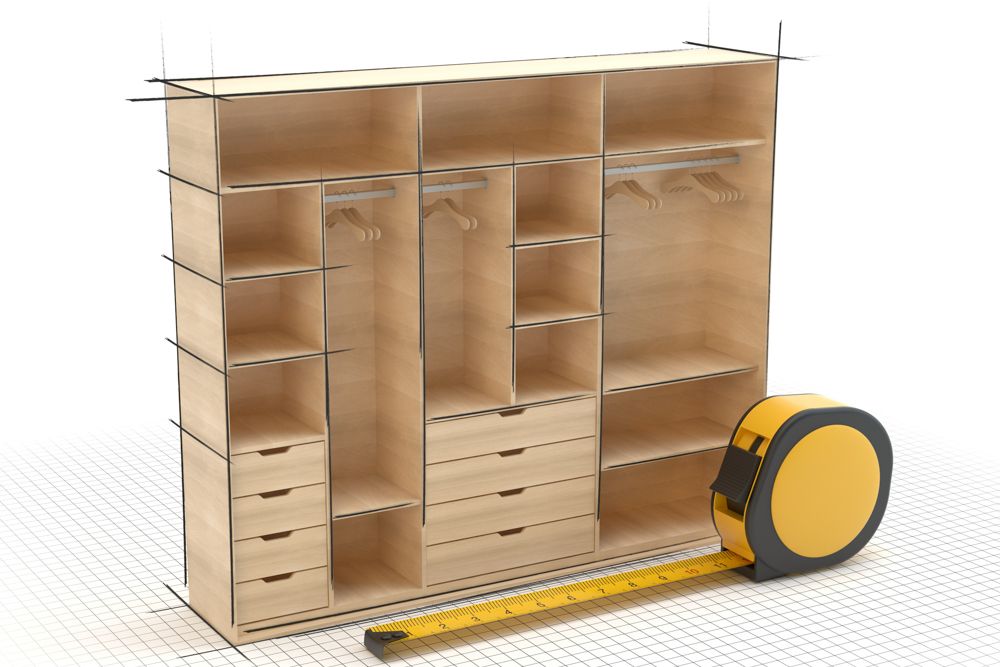
Before chalking out potential built-in wardrobe designs, there are a few measurements you’ll need to have on hand of the space the wardrobe will be fitted into.
- External dimensions: These are the length, width, height and depth measurements of the space you’re fitting the wardrobe into. If there’s a pre-designed alcove in the architecture of your home, you’ll find this step easier. For others, consider how far into the space you want the wardrobe to jut and how thick the walls of it may be, to arrive at an estimate mounting distance.
- Internal dimensions: These will allow you to identify how much space you’ll actually get once your wardrobe is built. These numbers are dependent on the external dimensions as well as on the thickness of the wood or material of choice.
- Compartment measurements: This step comes after you’ve chalked out how the interior of your wardrobe will look. You will have to define how deep the shelves and drawers are, the individual measurements of each cubby hole and the dimensions of the hanger space(s). If there are any special installments to take place– think open baskets, security safes– you’ll need to account for these too.
Some standard dimensions to get the ball rolling are:
- Drawers: Minimum 0.5m in length
- Shelves: Minimum 0.3m in length
- Hanging space: 1m for men, 1.7m for women
Open or closed built-in wardrobe designs
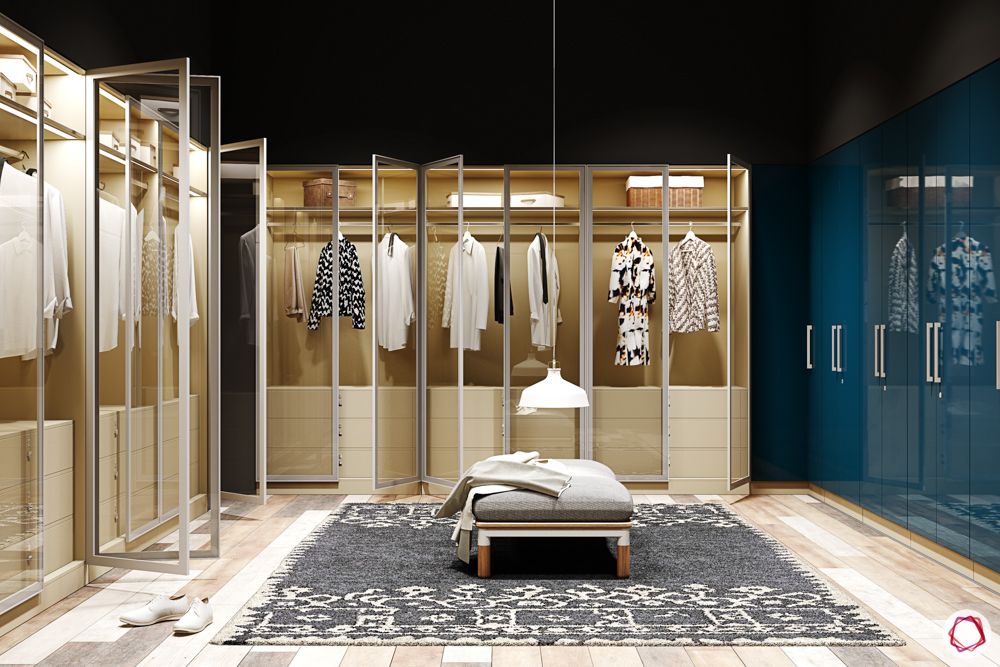
If you’re the adventurous type, you could choose from built-in wardrobe designs that are open rather than closed. These provide greater incentive to maintain your wardrobe and keep your clothes easily accessible. However, if your home is prone to dust, consider transparent doors to keep the dust out but have your belongings on display.
Materials to use for your built-in wardrobe designs
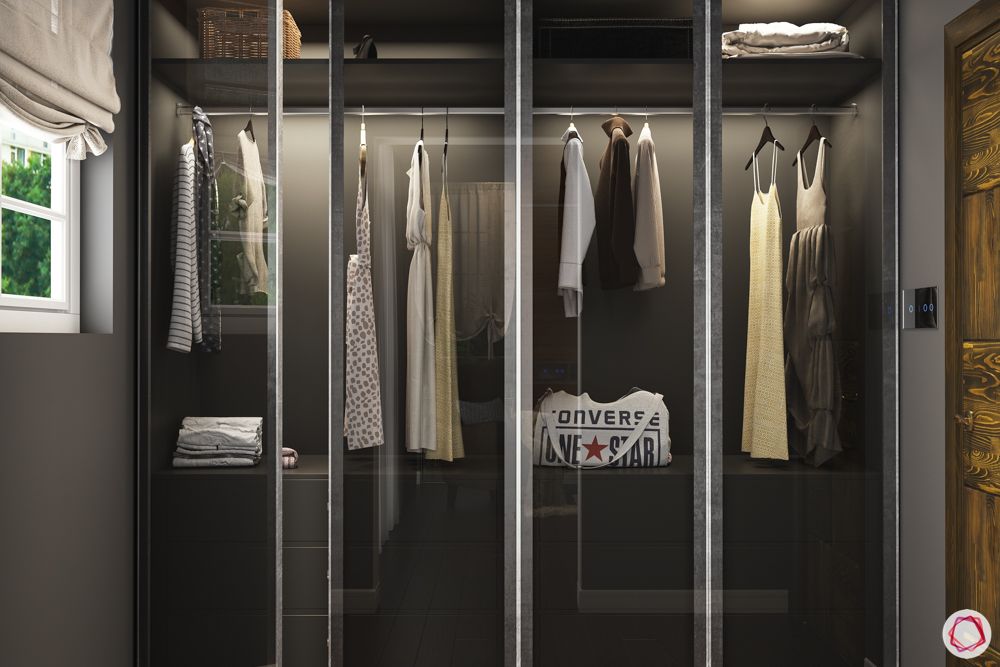
The material of your wardrobe matters in terms of aesthetics and durability. Matte or glossy plywood is usually the material of choice because it’s sturdy and can support heavy weight. Wood is also a classic option but can be expensive and far tougher to customise and later maintain.
Don’t forget the lights in your built-in wardrobe designs
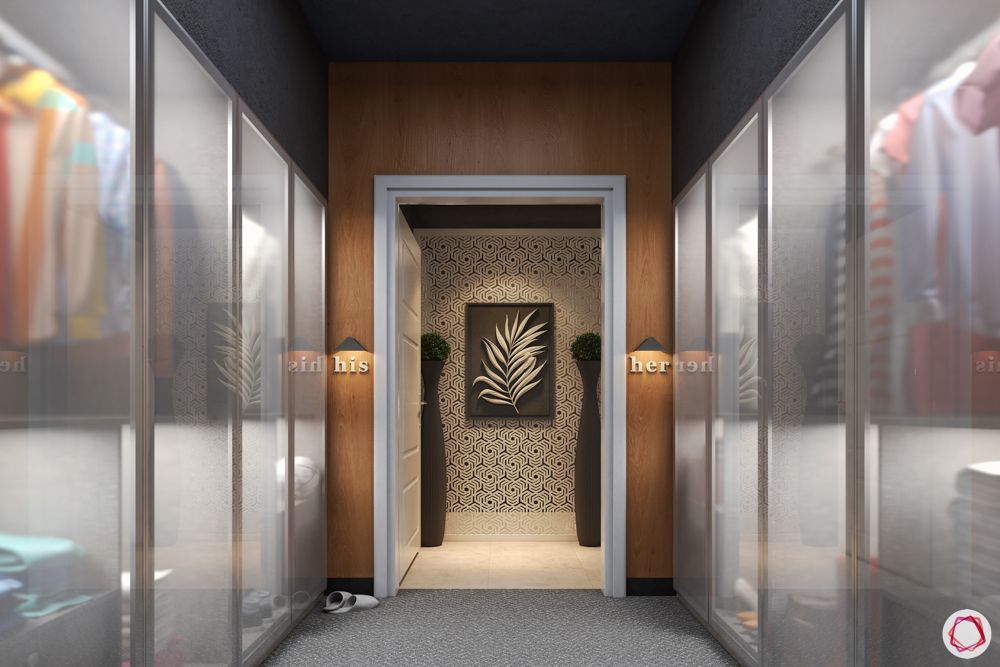
Depending on how deep your wardrobe is and how well-lit the room is, you may or may not need wardrobe lighting. However, it adds ambient lighting and it doesn’t hurt to see clearer! Ensure that the fixtures you choose diffuse light throughout the entire wardrobe and don’t emit heat. LEDs are your best bet as they’re also available in strips and rectangle fixtures that sit neatly on the wardrobe ceiling.
There’s no doubting the flexibility that comes with opting for built-in wardrobe designs. From compartments and sizing to material and finish, all the choices are in your hands, so make the right ones!
If these are the essential types of cookware, then we also have a list of glassware essentials for you. Take a look at this: 9 Must-Have Types of Glassware for Your Home Bar.
Send in your comments and suggestions.

